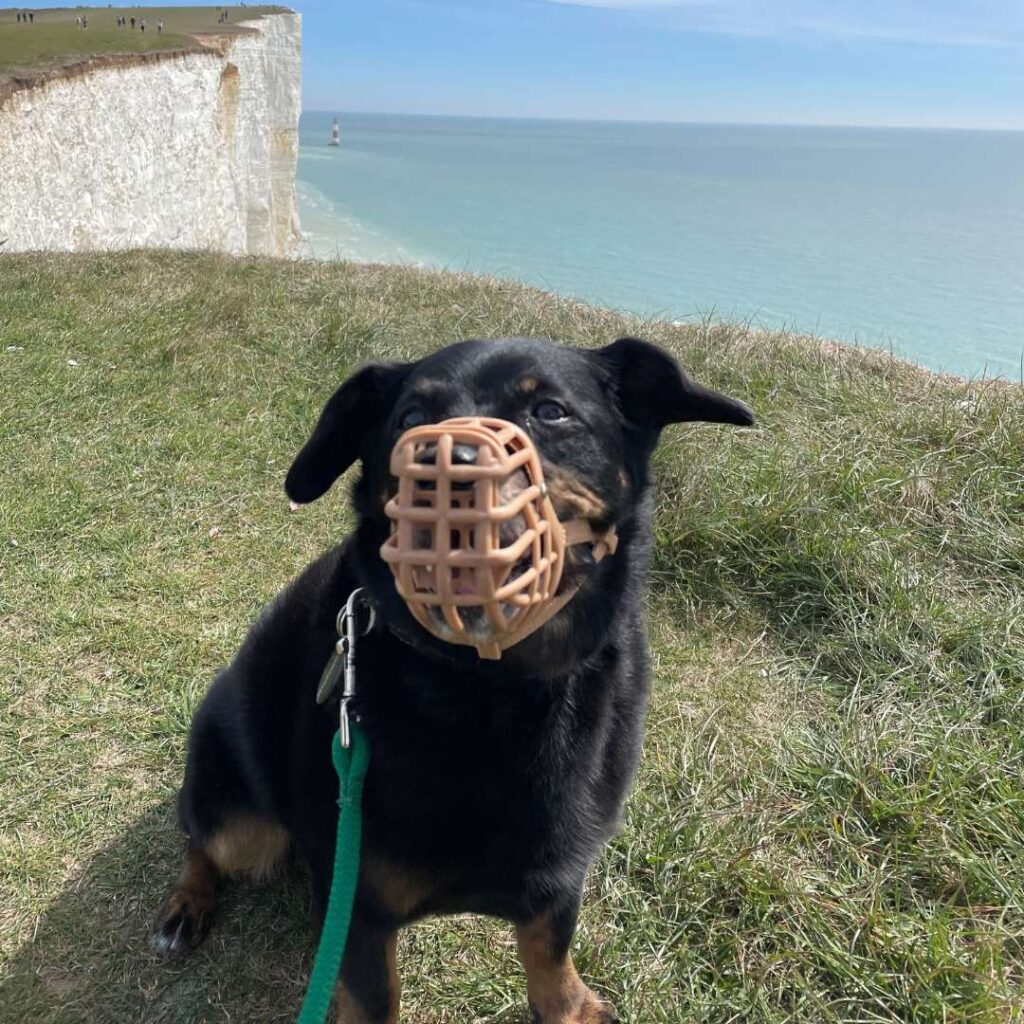It’s easy to demonise dog muzzles and think they’re only used for dogs who are aggressive or likely to bite. But that’s not true! Canine muzzles can have a wide range of uses and advantages, for dogs and owners.
Types of muzzles
Basket (Baskerville) muzzles are by far the best option, and probably the one you’ve seen most. A search of the internet will give you lots of basket options – in wire, leather and strong plastic – and in all colours from classic and stylish black to vibrant pink and even floral. Who says you can’t make a fashion statement?
While you might think soft nylon muzzles look nicer or more discreet, if fitted correctly to prevent biting, they don’t allow panting or drinking. These are purely for short term wear, such as visiting the vet. They shouldn’t be used for any longer than five minutes at a time.
Scavengers
Picture the scene… A beautiful sunny day, you’re out with your Labrador enjoying a walk in the countryside when suddenly their ‘food detection radar’ sniffs a family having a picnic! By the time you get there, your beloved canine has polished off two pies, a quiche, and half a cheeseboard.
Or maybe your dog’s tastes run to the more… errr… basic. Horse poo, sheep poo, or various other gross things…
A muzzle can be a godsend to prevent socially embarrassing – or just plain disgustingly smelly – snacking and scavenging!

Legal requirement
Certain exempted breeds (or types) are required to wear a muzzle when out in public under Section 1 of the Dangerous Dogs Act 1991. This includes in cars, so it’s even more important they can pant and drink.
The most important thing to remember is these dogs don’t have to have done anything in order to be covered by this legal requirement. But because they look a certain way, they have to muzzle up.
Hunters and chasers
Some of our most beloved breeds love to chase small furry animals. It’s what they were developed to do, and like it or not, that instinct is still very much there. A muzzle will obviously not prevent them chasing the small mammal population, and this includes local cats! But it will stop them catching and potentially killing them.
Muzzling your sighthounds, terriers or any ‘chaser of small furries’, will allow them far more freedom and keep everyone else – including the neighbourhood squirrels – safe and happy.
Read more about prey drive and predatory sequences in dogs.
Unpredictable behaviour
Many dog owners seem to have great reluctance when it comes to muzzling their dog. This possibly comes from negative associations with muzzles. But they can actually be a huge help for you and your dog, and allow your dog more freedom!
Those who have dogs that chase joggers or bikes, or behave unpredictably around strange dogs or people – seem far more willing to just trust to luck than take precautions and use a muzzle to ensure their dog can’t get toothy.
Responsible ownership is about keeping your dog safe – and keeping everyone safe from your dog. Yes, avoid situations where your dog is likely to become problematic, scared or worried, and of course see a behaviourist and work on a behaviour modification plan. But in the meantime, a muzzle will give you peace of mind and keep everyone else safe (and you and your dog the right side of the law).
The Perfect Fit
Your aim when finding a muzzle is most importantly your dog’s comfort. Your dog has to be happy to wear it and it mustn’t rub anywhere (either on their nose/muzzle or behind the ears/along the strap). They must be able to pant and drink totally unrestricted. You also need enough space to be able to give a treat – but not so much the dog could make contact with someone with their teeth.
Not all muzzles suit all breeds – so shop around and ask other people who have a dog of your breed or type and discover what they use.
Then you need to find the right size. Take lots of measurements so you can make sure you get a muzzle that’s a perfect for your dog.
- Measure the length of your dog’s nose (don’t measure right up to your dog’s eyes – you need a muzzle that sits about 1.5cms in front of the eyes).
- Measure the height of your dog’s nose at the widest bit (usually from just in front of their eyes (1.5cms again) to the bottom of their chin/deepest part of their jowl in a straight line).
- Measure the width of your dog’s nose (the widest part of their cheeks from the top).
- Most straps are adjustable enough that you don’t have to worry too much about those, but just check they’ll fasten comfortably and buckle/clip isn’t going to rub your dog’s ears.
Introduce the muzzle slowly and gradually. You can’t just stick it on your dog and expect them to be happy about it. There are plenty of resources on the internet about how to muzzle train your dog – but I’d recommend looking at the ones produced by UK animal welfare/rescue charities.
Then get out there and strut your muzzled stuff with pride! You’re showing you’re a responsible owner who takes the safety of your dog and of everyone else seriously.

